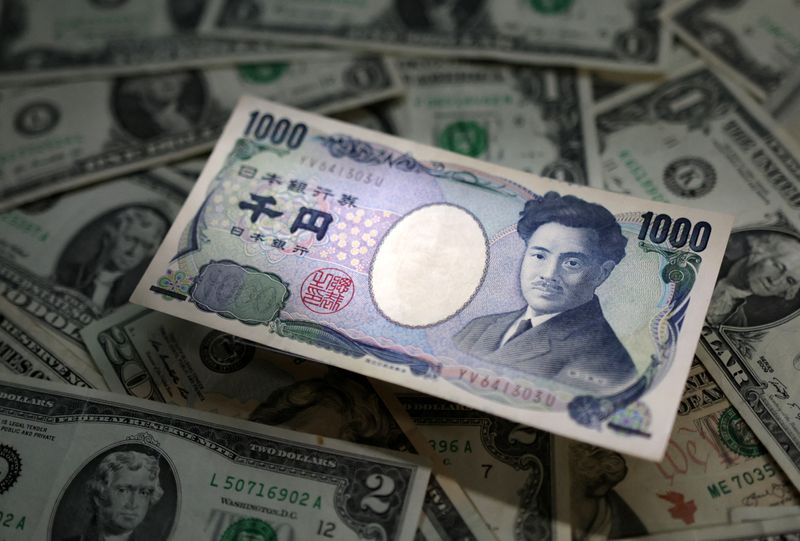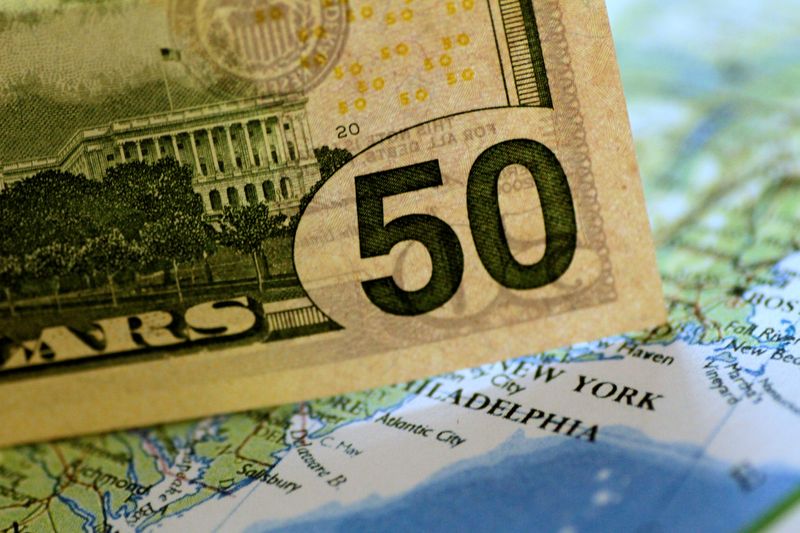
By Karen Brettell
NEW YORK (Reuters) – The dollar added to losses on Wednesday after the Federal Reserve held interest rates steady but opened the door to reducing borrowing costs as soon as its next meeting in September.
Fed Chair Jerome Powell said in comments after the statement from its two-day meeting that an interest rate cut could be on the table as early as September if inflation moves down in line with expectations, growth remains reasonably strong and the labor market remains as it is.
But he also said that the U.S. central bank remains data dependent and has not made any decisions about future meetings.
“The Fed wants to let the data play out a little bit longer, even at the risk of falling behind the curve,” said Adam Button, chief currency analyst at ForexLive in Toronto.
Traders have fully priced in a September rate cut, which may take pressure of the Fed to signal a certain move then.
“Everyone in the market knows it’s priced in, the Fed knows it’s priced in, so really not pushing back against that is a kind of implicit endorsement of market pricing,” said Button.
Traders are also expecting a second and possible third cut by year-end.
The dollar index fell as low as 103.92 and was last down 0.34% at 104.09. It is on track for a monthly loss of 1.7%.
The next major U.S. economic release that is likely to drive Fed policy will be Friday’s government jobs report for July. It is expected to show that employers added 175,000 jobs during the month, according to the median estimate of economists polled by Reuters.
The ADP National Employment Report on Wednesday showed that private payrolls rose by 122,000 jobs this month, below economists’ expectations for 150,000 in jobs gains.
The Japanese yen hit a four-month high against the dollar on Wednesday after the Bank of Japan raised rates to the highest since 2008 and indicated that more hikes may follow.
The BOJ raised the overnight call rate target to 0.25% from 0-0.1%, the largest increase since 2007.
“A lot of market participants were preparing for this as if it was a possibility, but very few actually expected the BOJ to raise more than 10 basis points,” said Helen Given, FX trader at Monex USA in Washington. “This upside surprise is giving yen a huge boost.”
Japan’s rate increase came just months after the BOJ ended eight years of negative interest rates as the bank’s chief seeks to dismantle his predecessor’s unorthodox policies.
The Japanese central bank also announced plans to halve its monthly Japanese government bond (JGB) purchases to 3 trillion yen as of January-March 2026.
The yen has rallied since hitting a 38-year low of 161.96 against the greenback on July 3, in large part boosted by interventions by Japanese authorities. Traders unwinding bets that were short the yen and long the dollar has added to the move.
Japanese authorities spent 5.53 trillion yen ($36.8 billion) intervening in the foreign exchange market this month to boost the currency, official data showed on Wednesday.
The dollar was last down 1.87% at 149.91 yen and got as low as 149.63, the lowest since March 19. It is on track to post a monthly loss of 6.9% against the Japanese currency, the largest since November 2022.
The Australian dollar fell to a three-month low of $0.6480 and was last down 0.08% at $0.6532, following a softer reading on core inflation.
Markets abandoned bets of a further rate hike from the Reserve Bank of Australia after the data.
The euro gained 0.05% to $1.082 and is set for a roughly 1% gain in July.
Euro zone inflation unexpectedly edged up in July, data showed on Wednesday, although a widely watched gauge of price growth in the services sector eased.
The pound was up 0.11% at $1.2848 and is heading for a monthly gain of 1.5%.

Sterling options volatility rose to its highest in almost a year, reflecting the degree of nervousness ahead of Thursday’s Bank of England rate decision where markets are pricing in 66% odds of a rate cut.
In cryptocurrencies, bitcoin fell 0.77% to $65,668.
This post is originally published on INVESTING.


